When shopping for sweet peas, or any flowering plants really, I find it very difficult to know just what I’m getting. The quality of plant photography, printing, and computer monitor displays vary so widely that varieties depicted in catalogs or online often bear no resemblance to reality. As I’ve fallen further down the sweet pea wormhole, I find that the only real way to know exactly what a bloom will look like is to grow it myself. This makes color planning a bit hit-and-miss, but the thrill of discovering a variety even more spectacular than its Web presence is worth the inevitable disappointment when some fail to deliver.
I do a lot of research before I order my seeds, and look at as many photos as possible in order to average them out in my mind to what I think I might get. I’ve often wished for more accurate descriptions of varieties and their colors, with photographs that were created to be as true to reality as possible. Having not yet found such a resource, I have decided to start one myself. What follows are images as closely aligned with what I perceive to be how the flowers actually look. As always, your computer monitor may vary, but this may still be helpful in some way. If nothing else this is a record for me of what I have grown, and what I’d grow again.
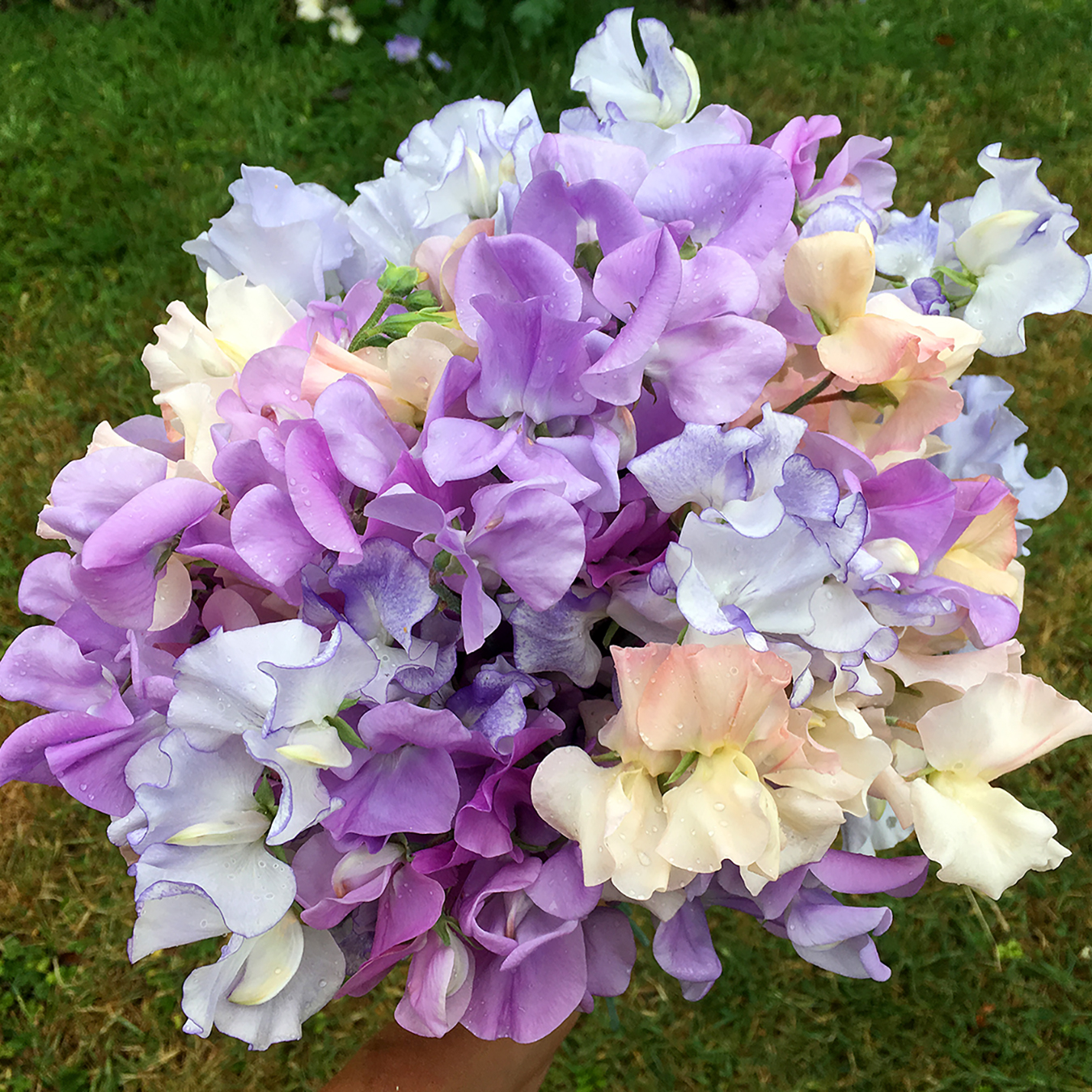
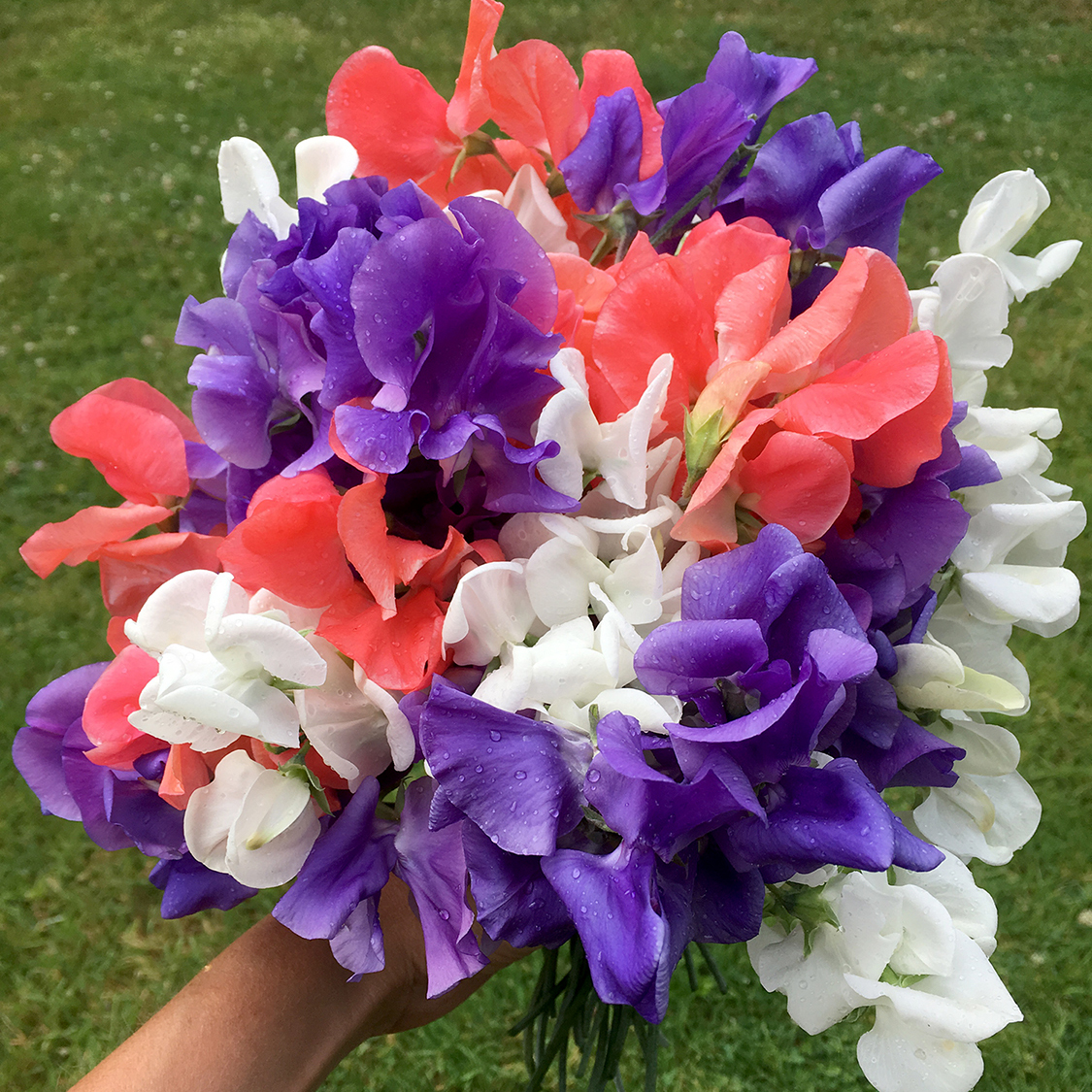
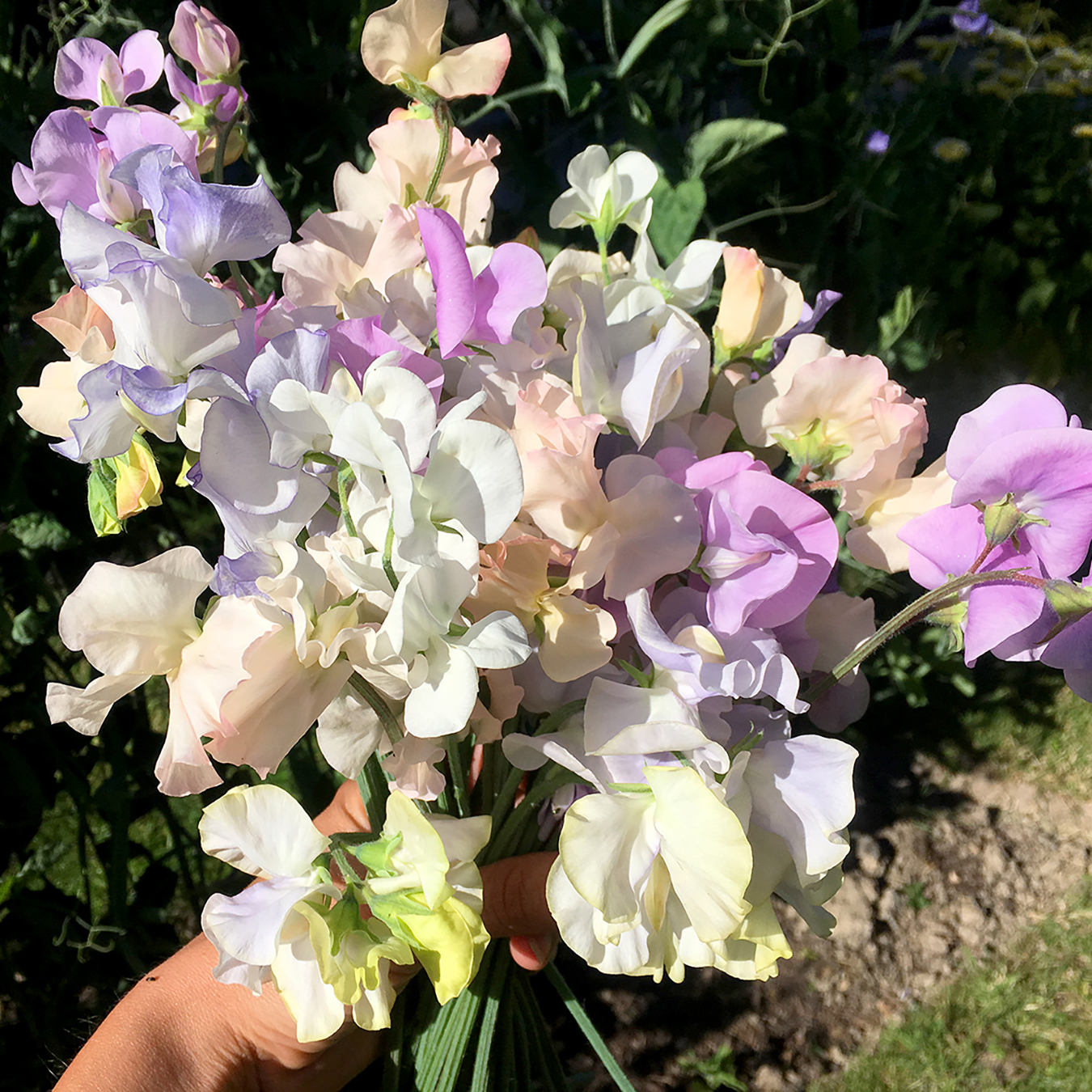
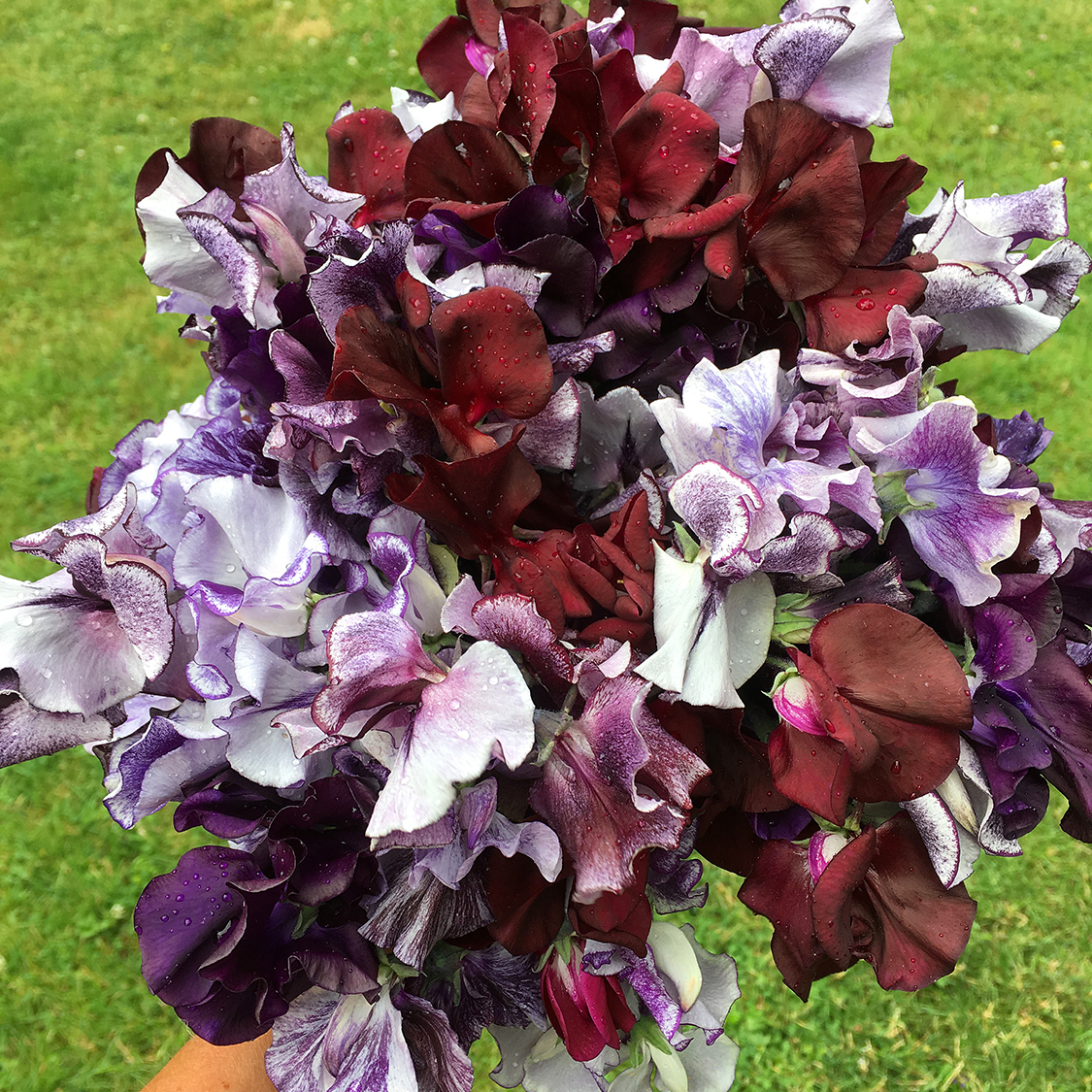
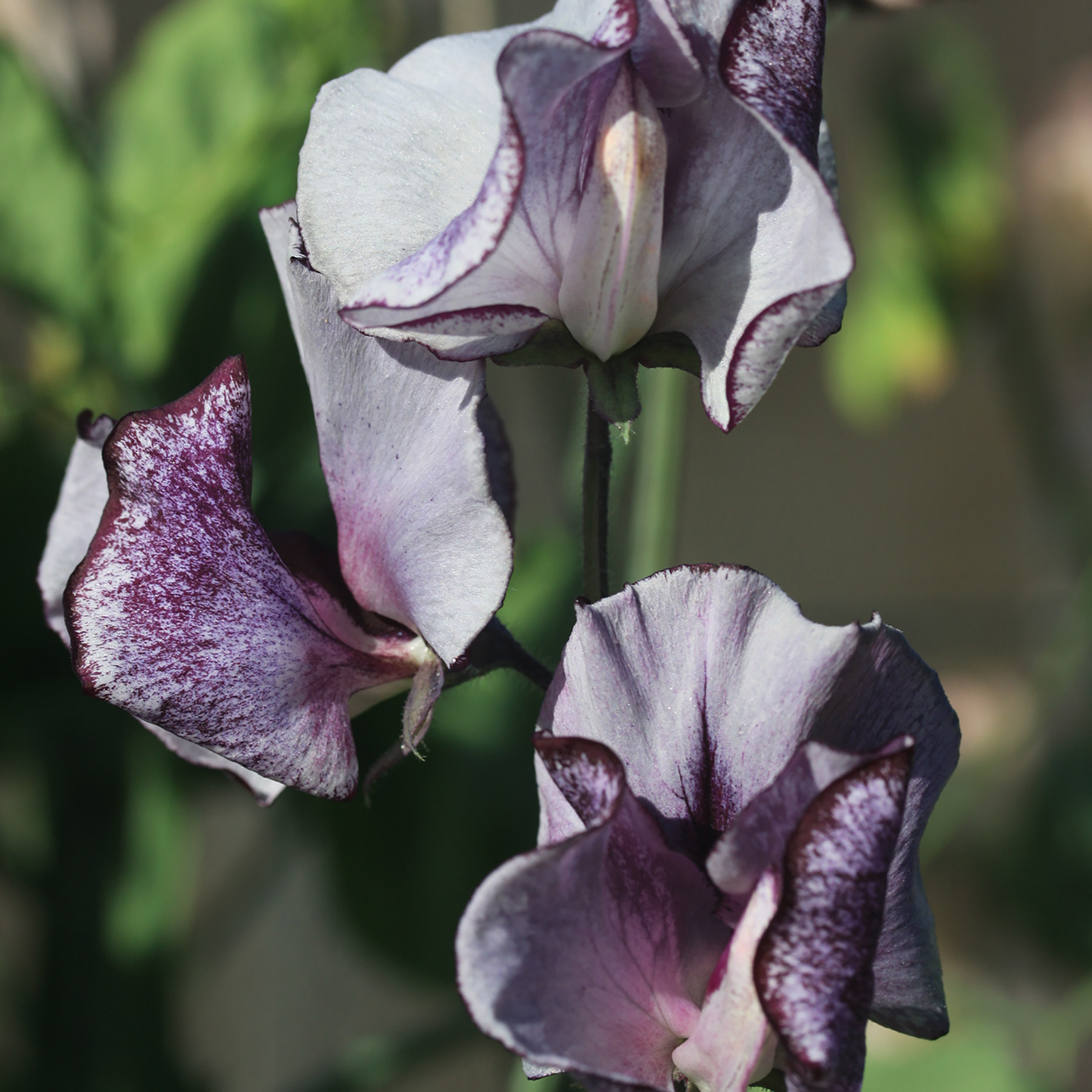
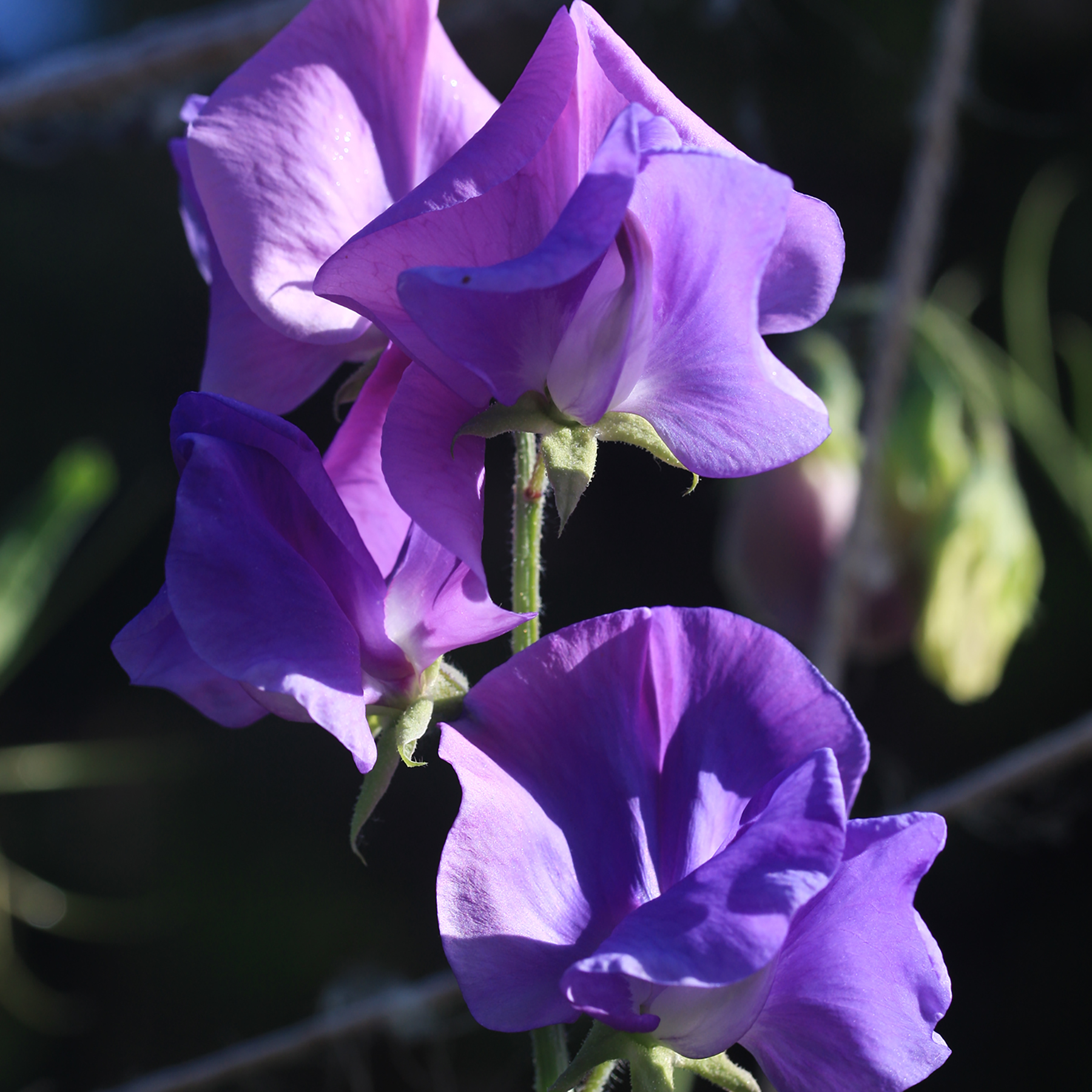
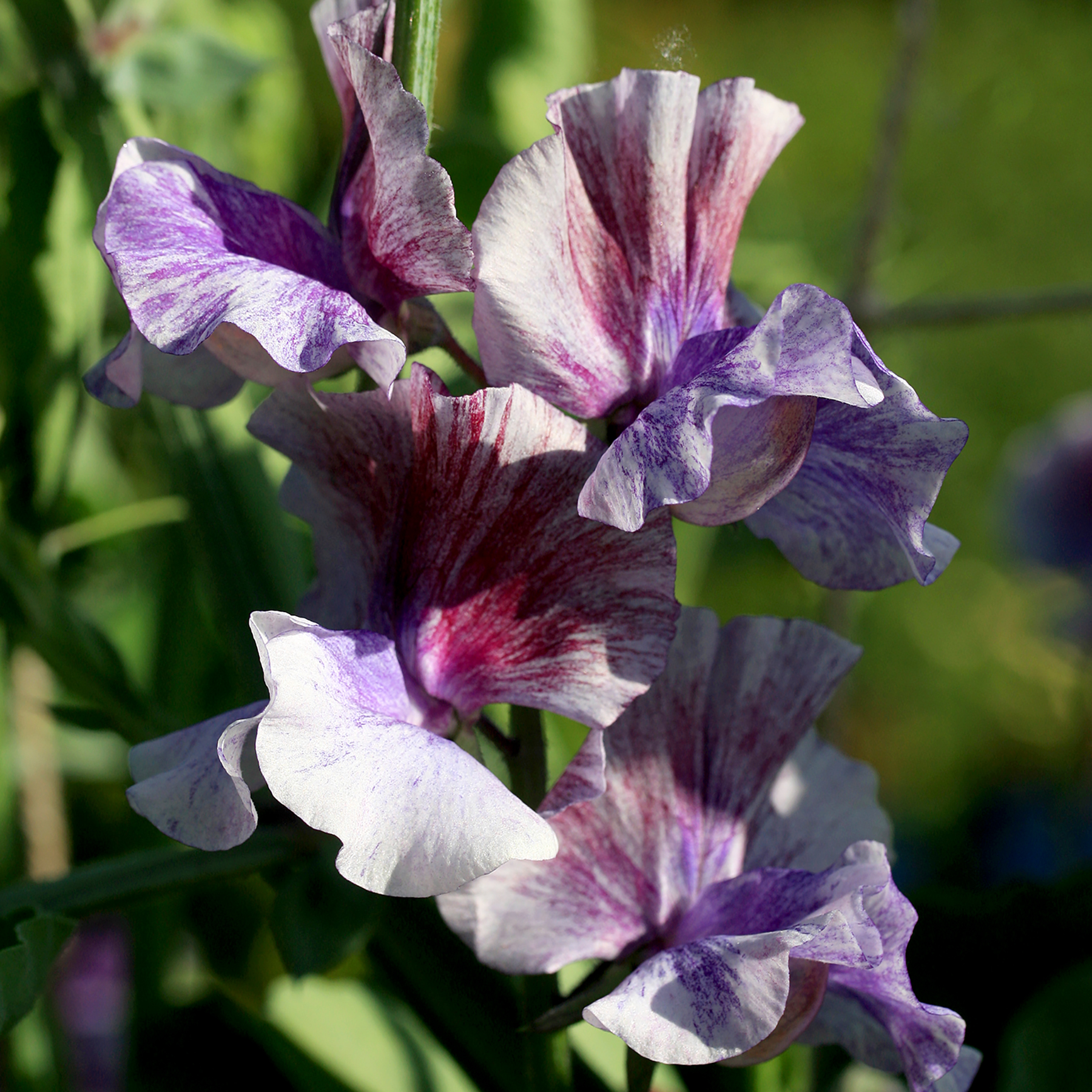
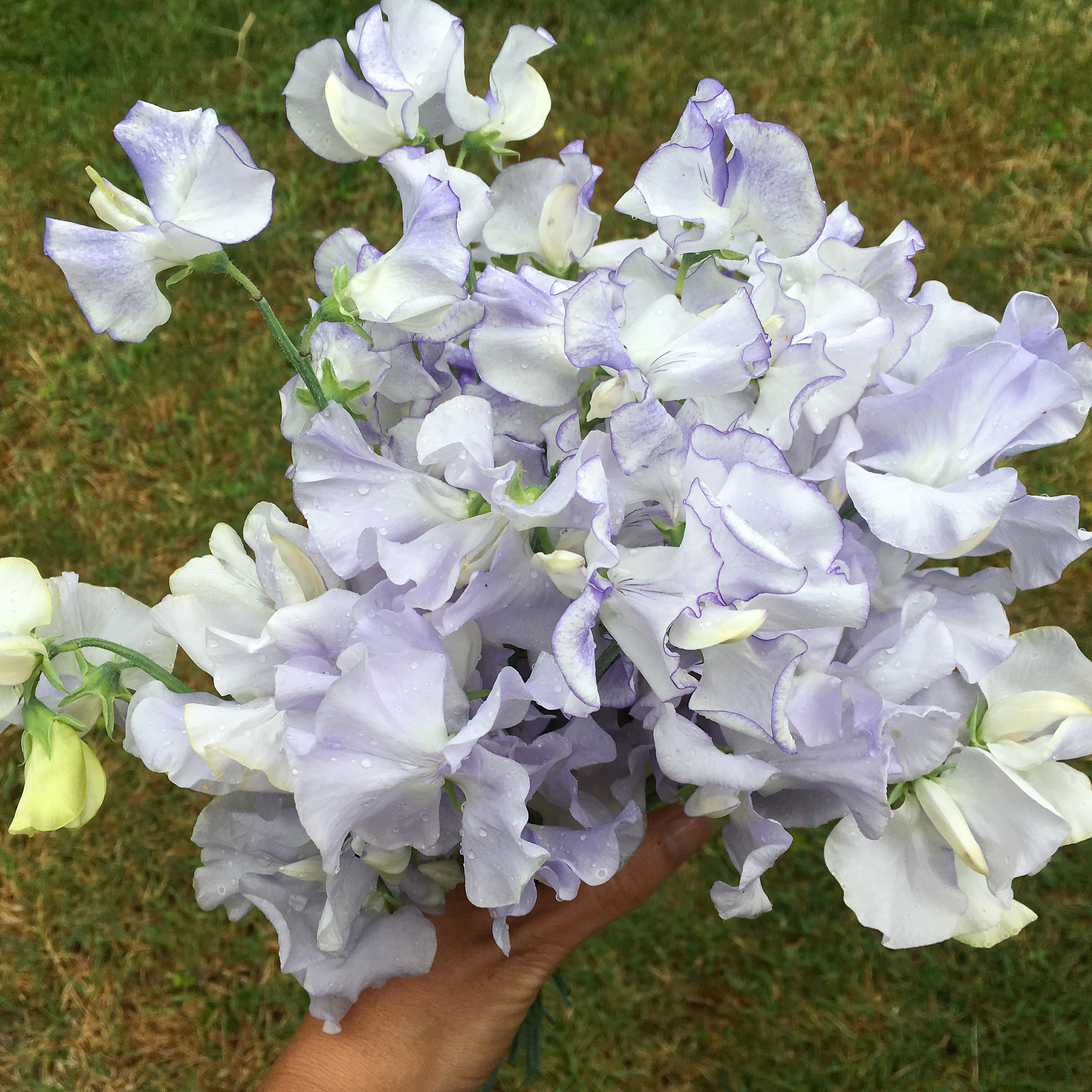

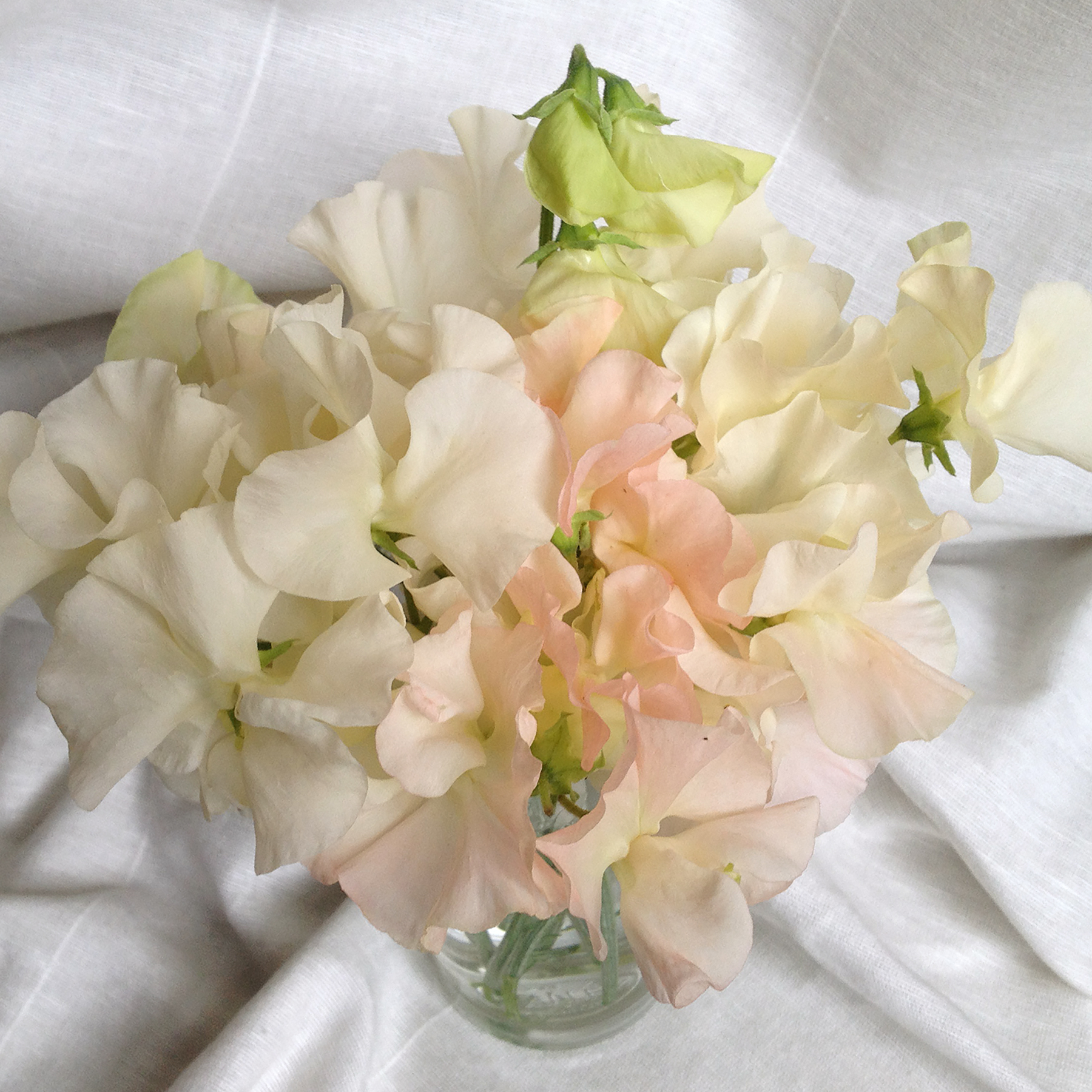

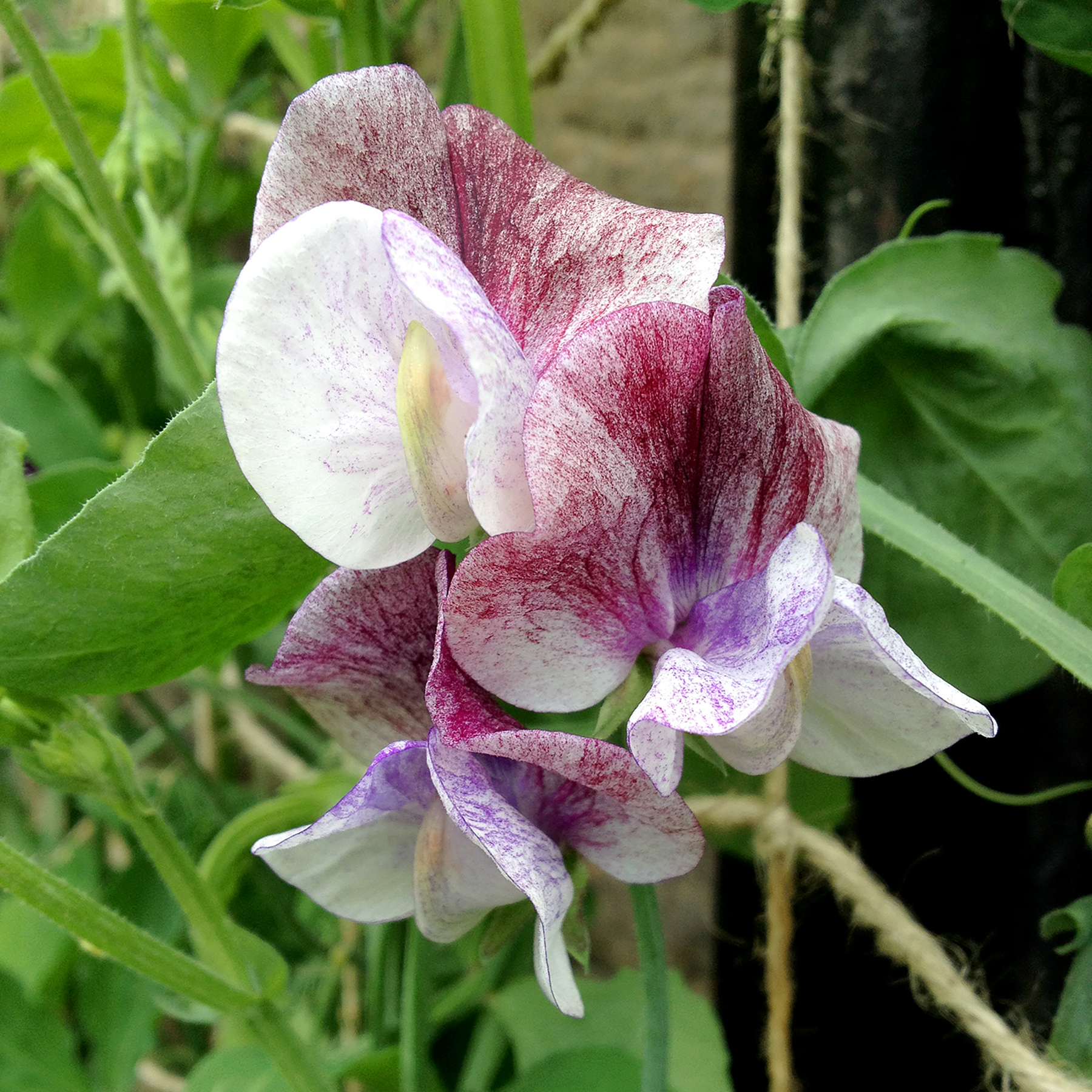
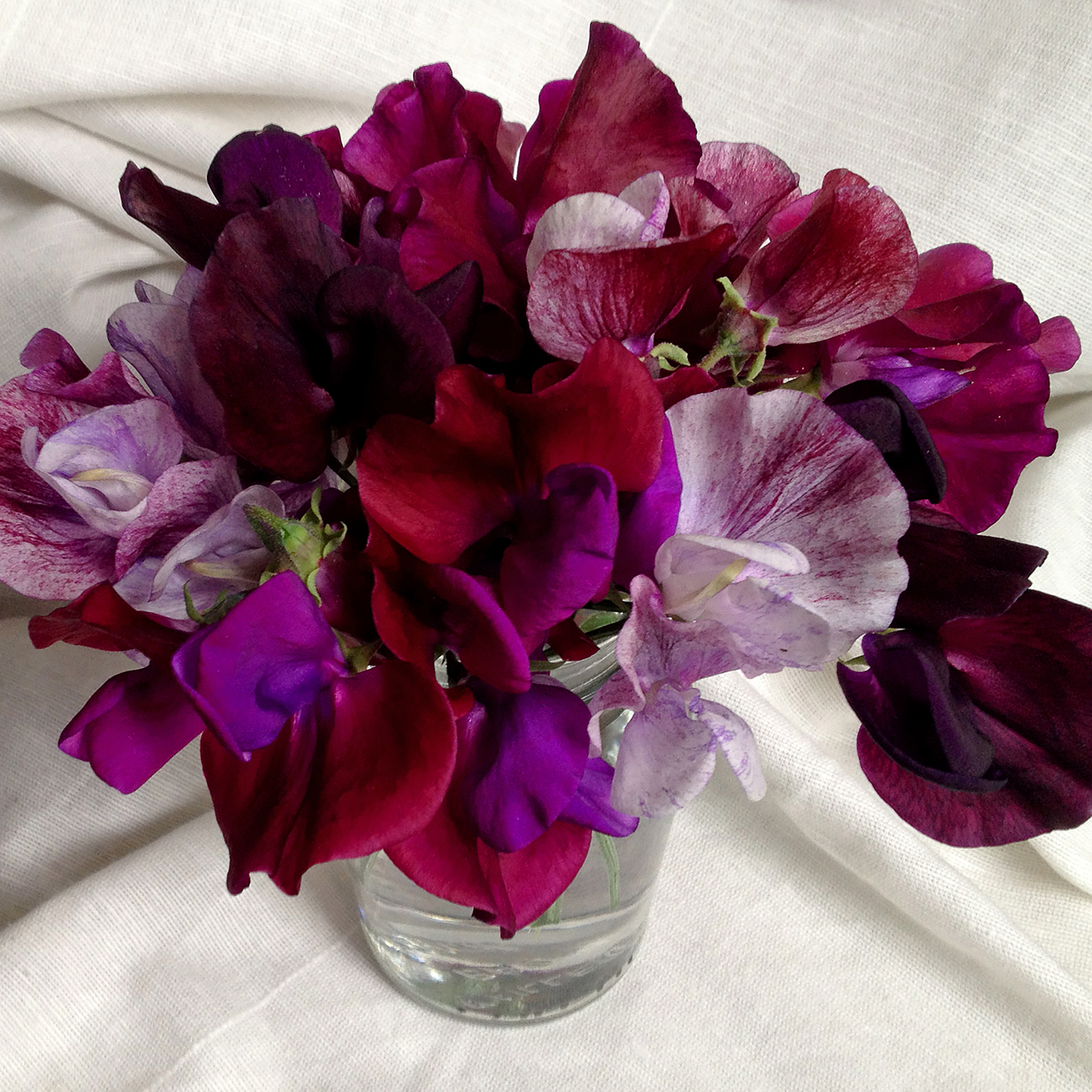
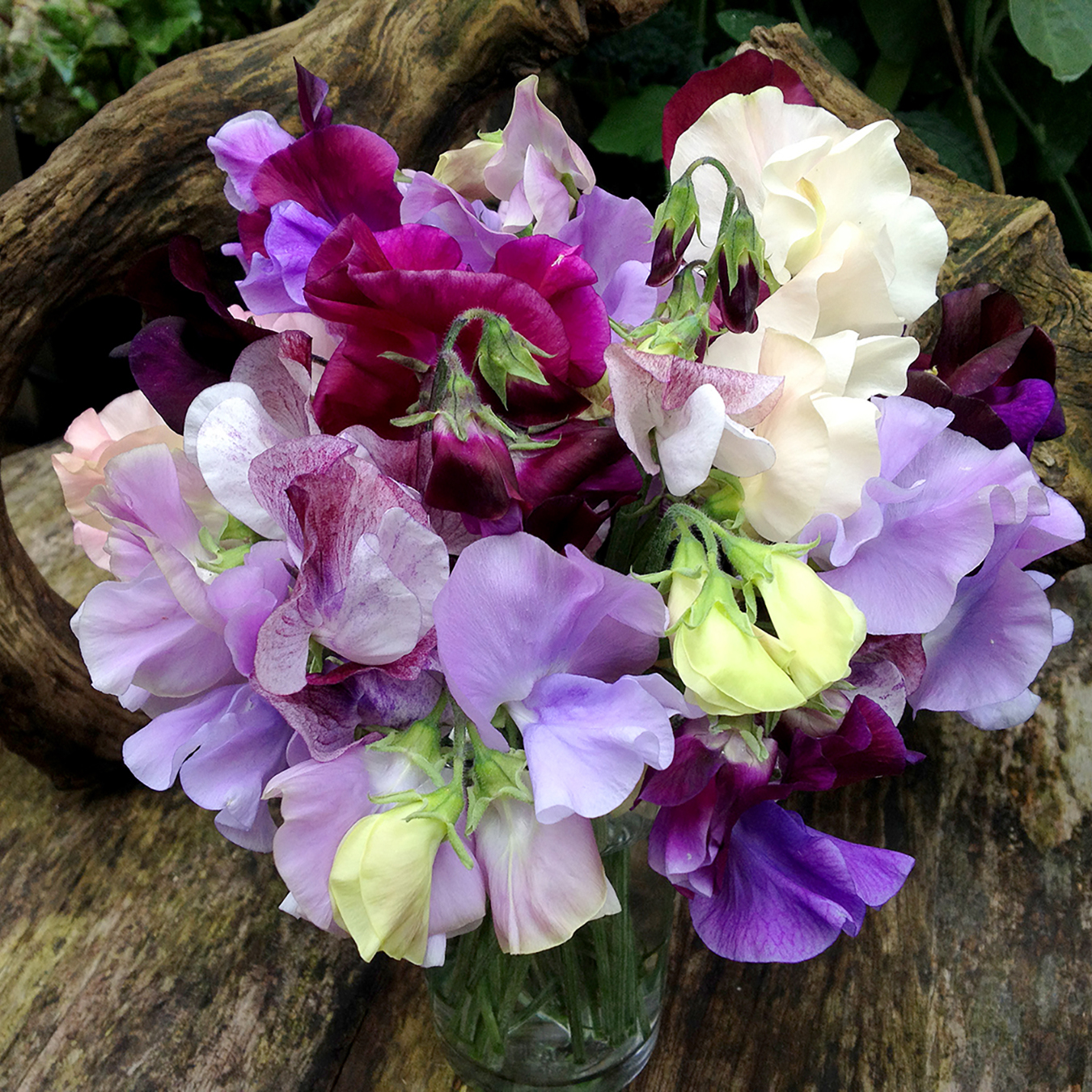
In 2018 I grew:
‘Piggy Sue’: a pale ivory with peach tones
‘Kingfisher’: supposedly a pale blue but this came up a bright red, pointing to a mistake from the seed supplier
‘Nimbus’: an almost-grey flake with deep purple-red streaks
‘Maloy’: coral orange'
‘Noel Sutton’: solid mid-blue
‘Betty Maiden’: white with purple blue flake'
‘Oban Bay’: very pale blue, almost white
‘Dorothy Ekford’: white
‘Earl Grey’: purple and maroon flake
‘Blackberry’: deep red
‘Hero’: very dark blue
I had a few seeds left over from those I’d randomly collected off student plots my first year studying in Edinburgh. One of them turned out to be a very pretty lavender, which though it was a color I don’t think I would have bought, I ended up loving. Too bad I’ll never know its name!
I was excited to grow a coral orange sweet pea called ‘Maloy,’ which came heavily recommended by Floret. However, the second image perfectly illustrates why I consider ‘Maloy’ to be a failure. It’s just too hard to work into bouquets, especially as my tastes tend toward the cooler sweet pea colors. I was also disappointed with the white, ‘Dorothy Ekford.’ It’s an old-fashioned sweet pea, and thus smaller-flowered than the modern varieties, but it didn’t do much for me.
‘Piggy Sue’ was pretty and blended well into arrangements. The mid-blue ‘Noel Sutton’ was okay—it had nice big flowers but didn’t really get my pulse going. There may be more interesting blues out there. ‘Blackberry’ and ‘Hero’ served their purpose to provide some deeper tones in arrangements, but two sweet peas I grew at work, ‘Windsor,’ and ‘King-Sized Navy Blue’ were better options for those colors.
‘Earl Grey’ and ‘Nimbus’ were similar in that ‘Nimbus’ took on almost sinister tones. I know it is very popular among cut flower growers, but something about it didn’t thrill me. I imagine it could be very beautiful combined with flowers other than sweet peas, and silver foliage such as Senecio cineraria , so I won’t discount it. I liked ‘Earl Grey’ and found it a beefed-up version of ‘Senator,’ my favorite of the sweet peas I grew in Edinburgh, though ‘Earl Grey’ was less deliciously scented.
My favorite of the bunch was ‘Oban Bay,’ which was an ethereal pale blue that bordered on white. I also liked ‘Betty Maiden,’ a variety I first met in the demonstration garden at the Botanics in Edinburgh. It is white with a blue stripe, or “flake.”
In Edinburgh I grew:
'Charlie's Angel’: mid- to pale-blue
'North Shore’: dark and mid-blue bicolor
'Jilly’: lovely ivory
‘Senator’: maroon and purple flake
‘Champagne Bubbles’: ivory and peach
‘Almost Black’: very dark purple
I actually liked all of these and would grow them again, though ‘Champagne Bubbles’ wasn’t as robust as ‘Piggy Sue’ and had similar coloration.
I now have my seeds for this year’s sowing, so stay tuned to find out what I will grow and how these new varieties stack up against the ones pictured in this post.